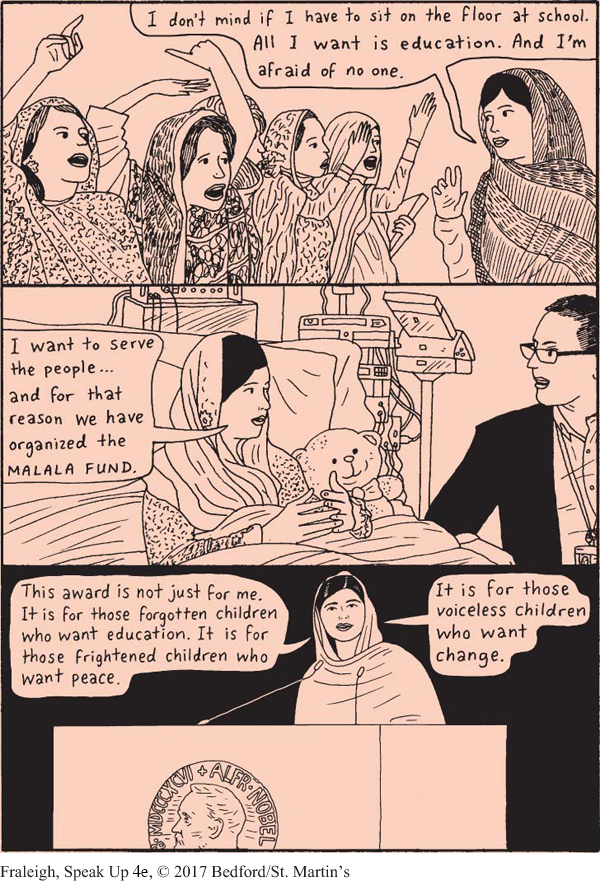Chapter 1: Introducing Public Speaking
Chapter Introduction
 Expand image in new window
Expand image in new windowAnchor link to paragraph below
Open asset file in new browser window
Open ebook file in new browser window
| Resource | Percent (%) |
|---|---|
| Google or Google Scholar | 73.6 |
| Library database or website | 13.6 |
| Wikipedia or online encyclopedia | 9.4 |
| Other | 3 |
| Total | 100.0 |
| Resource | Percent (%) |
|---|---|
| Google or Google Scholar | 73,6 |
| Library database or website | 13,6 |
| Wikipedia or online encyclopedia | 9,4 |
| Other | 3 |
| Total | 100,0 |
“Public speaking is right for you.”
Question 1.1
Question 1.2
Which is the best team in college sports?
Question 1.3
The best team in college sports is the .In 2008, was a ten-
In October 2012, a Taliban shooter attempted to end Malala’s life. Although suffering a gunshot to her head, Malala survived, and the violent attack did not deter her from continuing to speak out. Four months later, as she recovered in a British hospital, Malala delivered a message to the public: “I want every girl, every child, to be educated.” Since then, Ms. Yousafzai has been steadfast in her public advocacy for girls’ rights and education, delivering one of her most noteworthy speeches when she shared the 2014 Nobel Peace Prize.
Malala Yousafzai’s story is a unique example of how public speaking can change the world. In more everyday situations, public speaking is still a vital skill for anyone looking to inform, influence, or persuade others—
For example, as the supervisor of a team developing a new video game, you may have to deliver a presentation to a group of managers updating them on the team’s progress. As a leader in a nonprofit environmental organization, you may need to give a talk during a major fund-
Of course, you may find the thought of giving a speech terrifying. If so, you’re not alone. A survey by Randolph H. Whitworth and Claudia Cochran found that public speaking is Americans’ number one fear, and another researcher noted that many people find it “even scarier than rattlesnakes.” But there’s good news: you can learn to master public speaking—
This book walks you through the steps you need to follow in order to create and deliver an effective speech—
But before we jump into the process of preparing and delivering an effective speech, we will take a few moments to explore the field of public speaking itself. In this chapter, we take a closer look at the benefits of studying public speaking. We also survey its rich tradition and consider the highlights of contemporary trends in the study of public speaking.